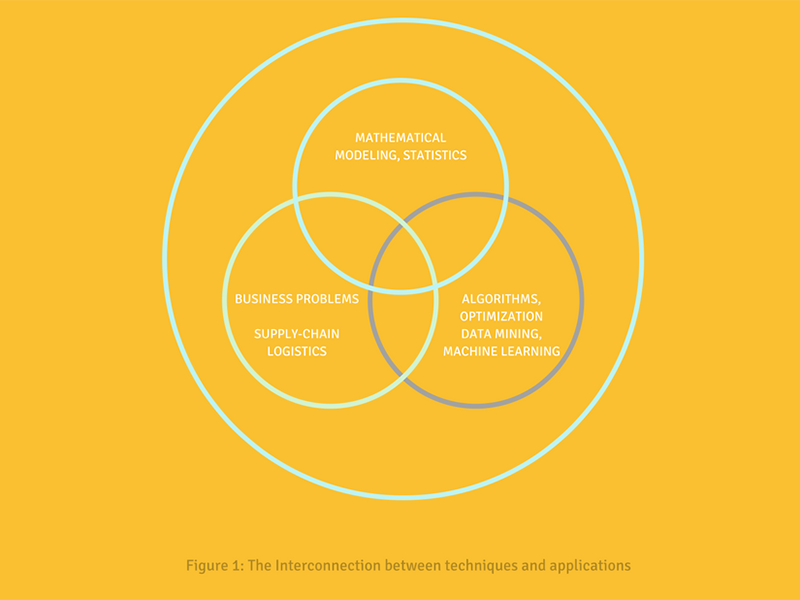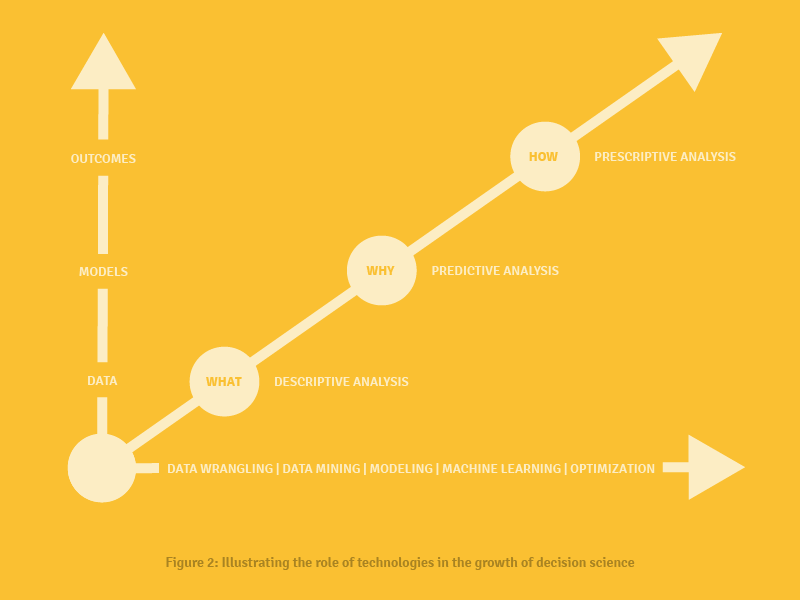LEARN TO MAKE BETTER DECISIONS VIA OPTIMIZATION AND MACHINE LEARNING
With the explosive growth in data fueled by the internet, cloud storage, and the internet of things (IOT), there is a need for decision processes that not only can parse voluminous data, but also make recommendations based on that data.
Computational decision science helps meet that need. Distinct from programs dealing with behavioral aspects of decision making, computational decision science allows you to analyze huge quantities of data while helping organizations make better decisions using algorithms, machine learning, and optimization techniques that interpret the data.
Just some examples of such techniques:
- AT&T has used optimization techniques to plan its high-speed network. Optimizing the design of high-speed networks includes collecting traffic data, then using characteristics of the network to formulate an optimizing problem. The challenge for AT&T was the number of variables in the program.
- GE has used optimization to improve train scheduling with multiple data points and schedule constraints.
- UPS has used route optimization to reduce the cost of parcel delivery while improving the accuracy of their results by learning routing data.
- A California hospital chain has used machine learning techniques and prescriptive analysis to reduce patient re-admissions.
As illustrated below (Figure 1), computational decision science uses techniques from mathematics, computer science, and business. The business and organizational domain provides the motivation and problems, classic problems including supply-chain and logistics. Solutions to these problems require mathematical modeling and statistics. More importantly the application of sophisticated algorithms and optimization are added, along with data mining and machine learning techniques to develop intelligence, e.g., business intelligence.
The Analytic Sequence
The road to optimized decisions involves the three phases of analytics: descriptive, predictive, and prescriptive analytics.
The Computational Decision Science and Operations Research (CDSOR) program helps you identify future trends that lead to determination of the best decisions, actions, or outcomes. This is distinct from descriptive analytics, which aids in the analysis of historic data to identify patterns using tools from data wrangling, statistics, and data mining. The results of descriptive analytics typically feed predictive analysis, which helps predict future trends and probabilities of events, and determines relationships in the data using tools from machine learning and statistical learning. Utilizing data to determine the best course of action is commonly called prescriptive analysis. The transitions from simple to sophisticated methods in decision science are illustrated in Figure 2.
The freshly minted field of prescriptive analytics is poised to take center stage within the new few years as viewed by a 2014 Gartner report. The digitization of information and the current IOT revolution will generate voluminous data that must be parsed for decision making. However, as emphasized in a 2010 IBM/MIT Sloan report, data gathering and wrangling are just the start of the decision–making process.
Methods that aid in decision making, as described above, are becoming increasingly important.
Computational decision science provides the foundations of prescriptive science.
Typical prescriptive analysis utilizes techniques from multiple technical areas, including fundamental techniques from statistics, algorithm design, mathematical modeling, and optimization theory and techniques, as well as applications that include machine learning, AI, and data mining.
CDSOR will train you in computational and mathematical discovery of decision processes, and you will be able to apply techniques learned in CDSOR to applications in multiple industries.
—Sanjiv Kapoor
Director, Computational Decision Science and Operations Research Program
Professor of Computer Science



